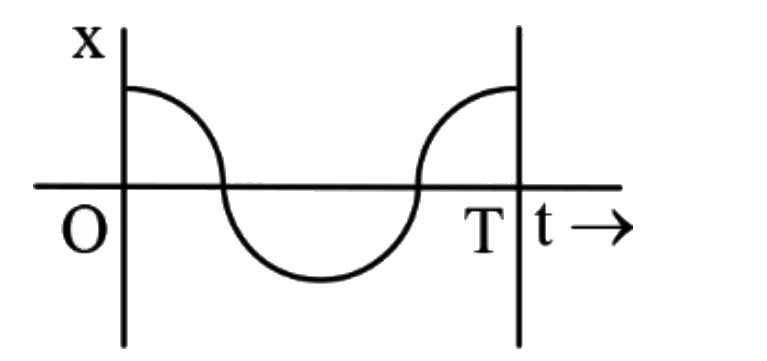A body is performing simple harmonic motion. Then its
average total energy per cycle is equal to its maximum kinetic energy
average kinetic energy per cycle is equal to half of its maximum kinetic energy
mean velocity over a complete cycle is equal to 2π times of its maximum velocity
root mean square velocity is 1√2 time of its maximum velocity
The correct Answer is:A, B, D
In SHM, total energy per cycle =12mω2r2
Max. K.E. =12mV2max=12m(rω)2=12mω2r2
Min. KE 12m(0)2=0 lt brgt Average KE per cycle =12mω2r2+02=14mω2r2=12(KE)max
Max. velocity =rω, Min velocity =0
Mean velocity =rω+02=12rω=12(rω)=12max.velocity
rms velocity =√0+r2ω22=rω√2=1√2(υmax)
Topper's Solved these Questions
- OSCILLATIONS AND WAVESBOOK - PRADEEPCHAPTER - OSCILLATIONS AND WAVESEXERCISE - JEE mains adv..(multiple choice quection)
150 Videos
- OSCILLATIONS AND WAVESBOOK - PRADEEPCHAPTER - OSCILLATIONS AND WAVESEXERCISE - integer type question
8 Videos
- OSCILLATIONS AND WAVESBOOK - PRADEEPCHAPTER - OSCILLATIONS AND WAVESEXERCISE - Multiple Choice Question-I
21 Videos
- MATHEMATICAL TOOLSBOOK - PRADEEPCHAPTER - MATHEMATICAL TOOLSEXERCISE - Fill in the blanks
5 Videos
- PHYSICAL WORLD AND MEASUREMENTBOOK - PRADEEPCHAPTER - PHYSICAL WORLD AND MEASUREMENTEXERCISE - Competiton Focus Jee Medical Entrance
18 Videos
Similar Questions
Knowledge Check
In simple harmonic motion
APotential energy and kinetic energy may not be equal in mean position.Bpotential energy and kinetic energy may be equal in extreme positionCpotential energy may be zero at extreme positionDkinetic energy plus potential energy oscillates simple harmonically.In a simple harmonic motion
Athe potential energy is always equal to the kinetic energyBthe potential energy of is never equal to the kinetic energyCthe average potential energy in any time interval is equal to the average kinetic energy in that time intervalDthe average potential energy is one time period is equal to the averge energy is this periodIn a simple harmonic motion
Athe maximum potential energy equals the maximum kinetic energyBthe minimum potential energy equals the minimum kinetic energyCthe minimum potential energy equals the maximum kinetic energyDthe maximum potential energy equals the minimum kinetic energy.
A body is performing simple harmonic motion of amplitude A and time period T. The figure shown position-time graph of the body . At any time t, acceleration of the body is f, then which of the following graphs is/are appropriate?

View SolutionA body is performing simple harmonic motion with amplitude A and time period T variation of its acceleration (f) with time(t) is shown in figure If a line x velocity of the body is x which of the following graph is correct?

View SolutionThe velocity of a particle performing simple harmonic motion, when it passes through its mean position i
View SolutionA mass M is performing linear simple harmonic motion. Then correct graph for acceleration a and corresponding linear velocity v is
View SolutionA particle is performing simple harmonic motion with amplitude A and angular velocity ω . The ratio of maximum velocity to maximum acceleration is
View Solution
